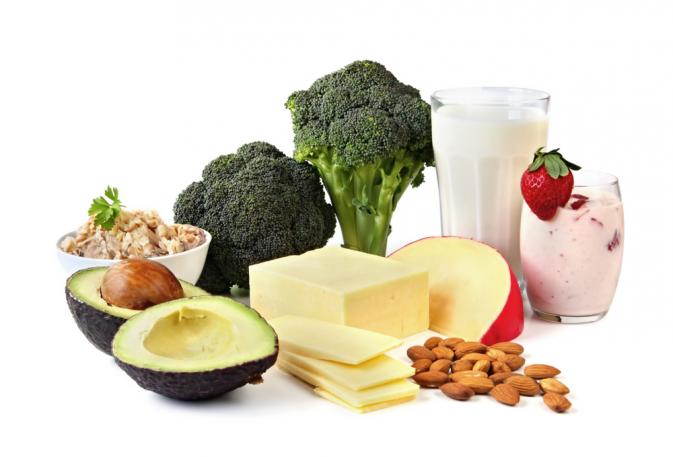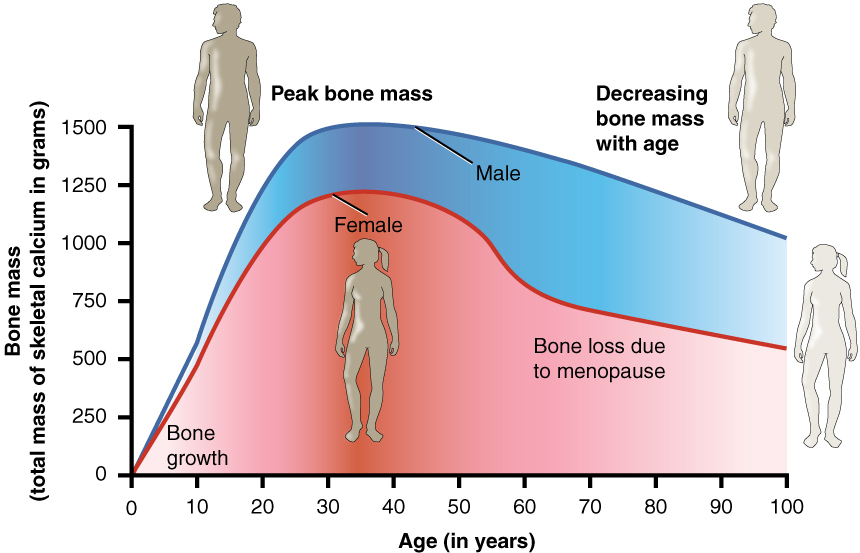It is assumed that in the future, osteoporosis will pose a growing medical and socioeconomic problem. Not only can it have a devastating impact on the quality of life of older people, but they can also become a ‘burden’ to their environment and the health system.

Advantages of calcium and vitamin D
Good nutrition is important at all ages in order to maintain healthy bones. Calcium intake reduces bone loss and reduces the risk of vertebral fractures. Calcium intake during childhood may be the cause of increased bone density in adulthood. This increase in bone density can reduce the risk of fractures later in life. Calcium is also useful for other organic systems by reducing blood pressure and cholesterol levels and regular intake of calcium supplements and vitamin D is useful in the prevention of tooth loss in adults.
Calcium recommendations
General recommendations – Premenopausal women and men should consume at least 1,000 mg of calcium per day, while postmenopausal women not taking estrogen should consume 1500 mg per day.
Calcium in the diet – Primary sources of calcium are milk and dairy products such as cheese and yogurt, as well as green vegetables, such as spinach. Some cereals, soy products and fruit juices are enriched with up to 1,000 mg of calcium per serving.
Calcium supplements – The body can absorb calcium from supplements, as well as from the food. If it is not possible to get enough calcium from a regular diet, consult your doctor to determine the appropriate type, dose and time of supplements.
What is osteoporosis?
Osteoporosis is a common bone disorder that leads to progressive loss of bone density and mass. As a result, the bones become thin, weak and easy to break. The amount of calcium which normally ensures the rigidity of the bone tissue and the bone, which provides the support of the bone is reduced. Such a fragile and porous bones are increasingly susceptible to various physical stresses. Osteoporosis is a major cause of serious disability of older people. Hip fracture caused by osteoporosis can happen in one of three women and one in five men under the age of eighty-five years. Despite the existence of objective possibilities, osteoporosis remains under-diagnosed and poorly treated.
 The symptoms of osteoporosis
The symptoms of osteoporosis
The symptoms of osteoporosis may go for years unobserved. The first sign of osteoporosis is a bone fracture. Symptoms are different for different bones. Pain in the spine is the main sign of weak parietal bones. For years, it leads to severe pain in the lower part of the spine and loss of height. The fractures in osteoporosis occur during normal activities. Generally, it is not about some big trauma. Hip fracture, which usually occurs after a fall, with osteoporosis may be due to some minor accidents and strikes in that area. Regular physical activity, maintaining flexibility of bone and joint structure can reduce the chance of fractures.
Treatment
A number of treatments can help prevent bone loss. However, the first step in the prevention or treatment of osteoporosis is the use of foods and beverages rich in calcium, a mineral essential for bone strength, and vitamin D, which helps calcium absorption.
Since the diagnosis of osteoporosis usually arrives too late, it is very important to adopt the culture of preventive examinations. Osteodensitometry is recommended for women older than 65 years, women in menopause who have at least one risk factor for osteoporosis, all women with spontaneous bone fractures, people whose height is reduced by at least 2.5 cm and so on.








